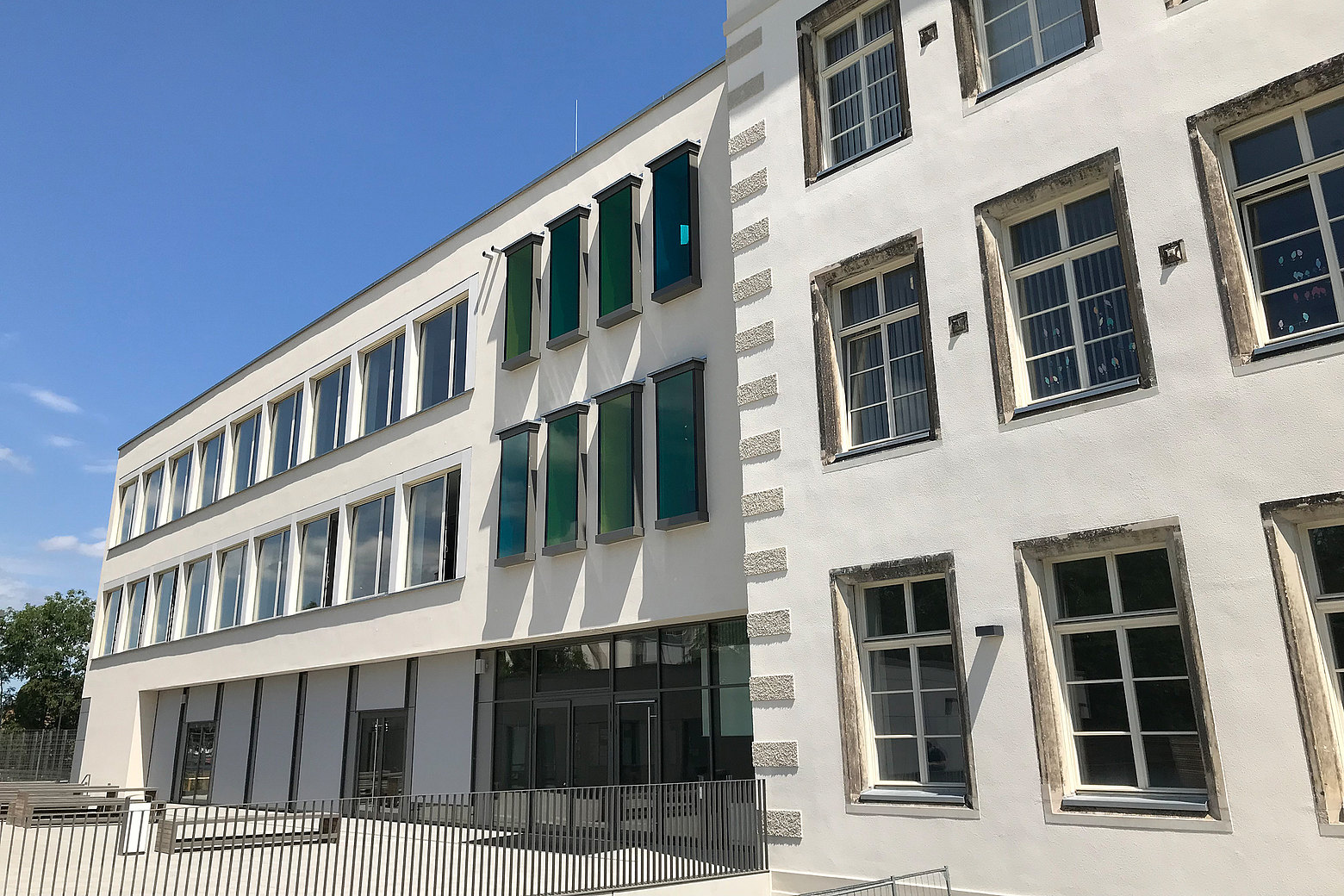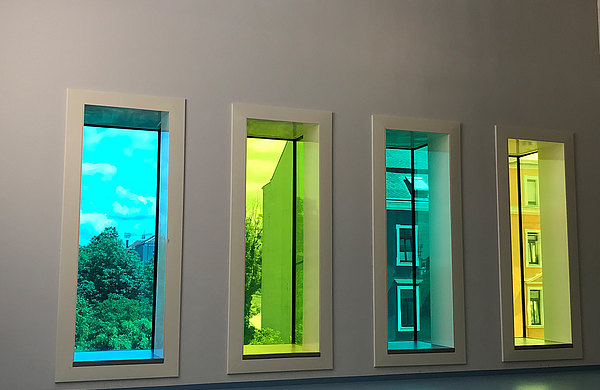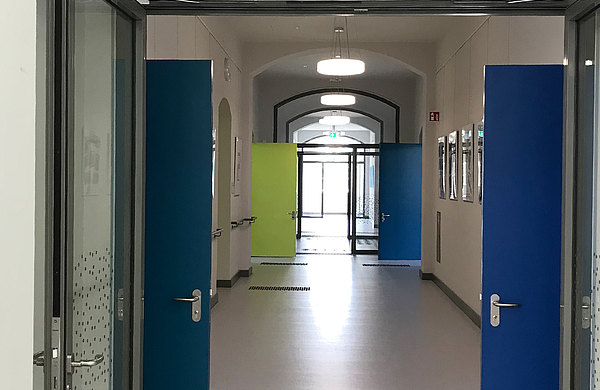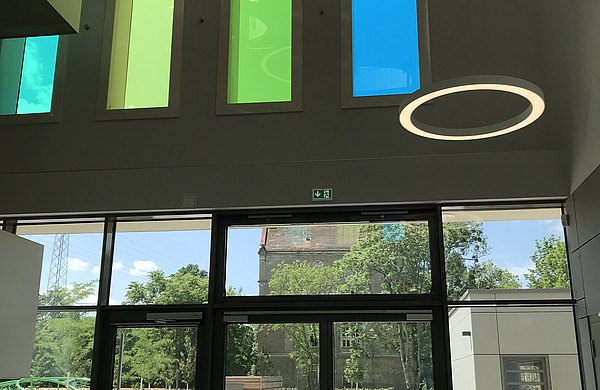Elementary school Dresden Fröbelstrasse, DE
153rd primary school Dresden
The 153rd primary school on Fröbelstrasse in Dresden-Friedrichstadt pursues an integrative concept: Here blind pupils are taught together with pupils without visual impairment. Door signs in Braille, handrails along the corridors and a tactile floor guidance system pointing to doors and stairs provide orientation within the school buildings.
The listed building dating from 1886/87 has now been completely renovated and an extension added. The two parts of the building are connected by a newly constructed entrance hall.
In the new building complex, forster unico windows and doors, forster thermfix vario facades as well as interior doors in forster fuego light and forster presto were used, some with a segmental arch top. The eye-catching green glazed cubes with all-glass corners are designed horizontally in forster thermfix vario. The large window sashes measure 1.80x2.70 m (WxH) and weigh over 300 kg.
Dresden, Germany
Systems: forster unico, forster fuego light, forster thermfix vario, forster presto
Fabricator: Sicherungsanlagen / Metallbau Chemnitz GmbH, Chemnitz
Architect: O+M Architekten GmbH, Dresden




